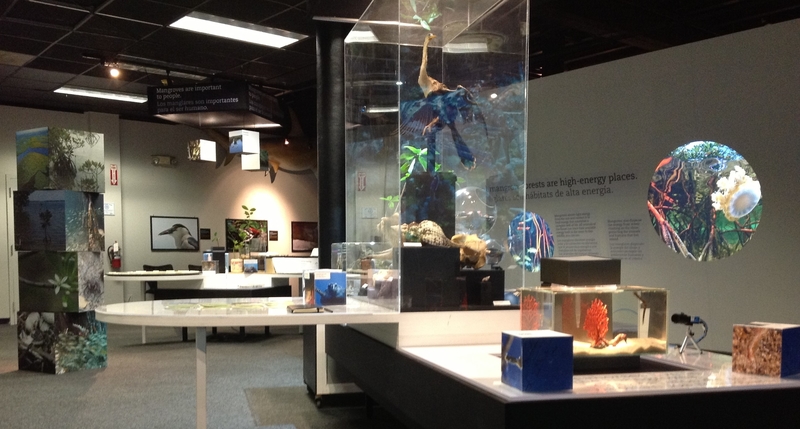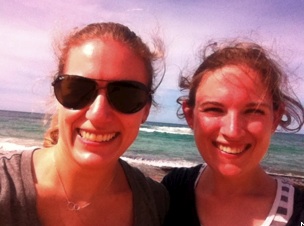
It takes lots of really creative, smart, hard-working people to create an engaging, interactive museum exhibit experience. But that includes more people than our Museum staff. Professional evaluators help us understand how to achieve maximum impact in our exhibits, and we also need you, our visitors and our community, to give us feedback on prototypes of our planned future exhibits. This process, and everyone involved, will help make our new Phillip and Patricia Frost Museum of Science the most fantastic science museum possible. Even now, we are excited to see prototype exhibits at our current Museum (as in the photo above). One of our evaluators from Randi Korn & Associates, was inspired to write this blog entry below (also posted on the Intentional Museum) about how her experience here impacted her.
Investigative Science
Roslyn Esperon
One of the amazing benefits of working as an evaluator with a variety of institutions is the opportunity for personal learning. Having an art-history background, I find myself learning the most when I’m placed in non-art environments—reading about fault lines and earthquakes at the California Academy of Science, or getting my hands dirty while exploring decomposers at the New York Botanical Garden. Granted, as an evaluator, my job is to understand how visitors experience these exhibits and programs, but as a museum-loving individual, I can’t help but want to engage with the content myself.
In the past month, some of my RK&A colleagues and I have had the pleasure of evaluating exhibits and programs about a range of topics, including tropical animal and plant life, of which I, as an Ohio native, have great appreciation for and very little personal knowledge. Recently we conducted a formative evaluation at the Miami Science Museum of the aquarium component planned for the new Phillip and Patricia Frost Museum of Science. The exhibits (a mix of interactives and live-animal tanks) were designed specifically to encourage visitors to look closely, discuss their observations, ask questions, and explain what their observations might mean. As I observed from visitors’ experiences, these sorts of exhibits and behaviors prompted visitors to engage as active participants and informal learners, having fun exploring an exhibit while employing scientific skills (sometimes even unknowingly).
It was a few weeks later on a work trip to Puerto Rico when I first realized how much I had unknowingly absorbed from our recent environmentally-focused work and how often I was using these newly found scientific skills. My colleague Emily Craig had surprised me with a visit to a local beach between our data collection sessions, and as we walked up and down the beach, I noticed that we were doing the same behaviors we had monitored weeks earlier when conducting the formative evaluation at the Miami Science Museum. We pointed out bright green vegetation and abandoned white shells once home to small creature
s adhered to the driftwood. We looked closely at the patterns of snail shells, which reminded me of patterns from blue and white china. We tested the suction-based strength of a sea urchin (one of the live animals we had learned about at the Miami Science Museum) when we attempted to carefully move it to safer grounds. We speculated about the type of rocks that made up the shore based on the way the rocks seemed to cement fossils and sea glass in their cracks. We observed a baby octopus that had been washed ashore before scooping it up and returning it to sea. We made claims about the small, squishy spheres we found on the shoreline, hypothesizing that they were eggs and guessing which creatures had laid them. In short, we were bringing our museum-honed scientific skills and sense of investigative science to the Puerto Rican shoreline.
Being on the shore for that moment gave me an even greater appreciation of the work that museums and cultural institutions do and their importance in our lives. Though I often visit institutions wearing my evaluator hat, focusing on other people’s experiences rather than my own, the information and knowledge institutions offer still seep into my subconscious interactions with the world—prompting me to wonder just how much we take away from our museum experiences that we may never even recognize.
Media Galleries
Photos
